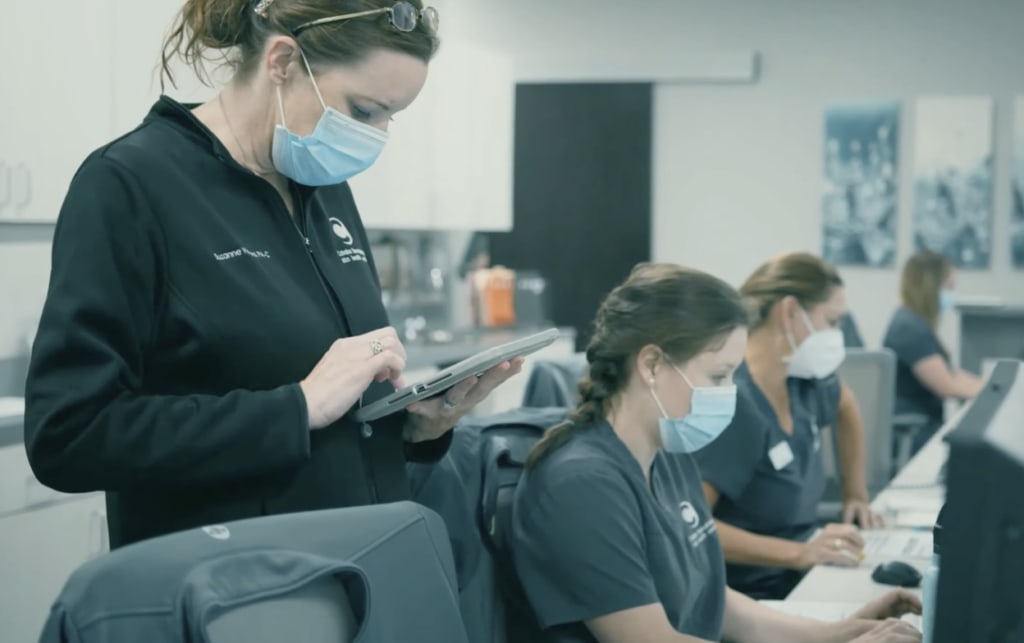This can include assisting in the development of Clinical Protocols and Medical Writing, conducting Statistical analyses, and managing-Site Monitoring.
Clinical practices
Choosing the right clinical research organization (CRO) is a critical step in the clinical trial process. Aside from the actual study, CROs offer a multitude of services to keep a clinical trial running smoothly and on time. It is important to find a CRO that is fully committed to your needs.
Choosing the right CRO will likely entail a bit of research. The best CROs have quality management systems in place to keep the quality of your trial up to par. It's also important to find a CRO that has a proven track record of conducting trials in your specific niche.
A good CRO will likely be able to recommend sites with good potential for recruiting patients. They will also be able to advise you on sample size requirements and how many monitoring checks to perform. They may also have a list of vendors they can recommend.
A clinical trial involving human subjects has many moving parts, including a large investment in time and money. It's no wonder that many CROs have reported a turnover rate of at least 20% in the last ten years. That being said, it's no wonder that a CRO has become an essential part of clinical research.
As a matter of fact, the best CROs for your trial are likely to be local. This is because local companies tend to be more familiar with the quirks of the country they operate in, and are therefore better suited for meeting your research needs.

Site monitoring
Traditionally, on-site monitoring involves an in-person evaluation by a representative of the sponsor at the investigation site. These visits have been a key component of the study life cycle. The presence of a monitor at the site is necessary for trials where remote monitoring is insufficient or where a videoconference solution is used.
During the monitoring visit, the PI or NCI should be available to answer questions and provide a summary of the findings. The PI is responsible for following up on the actions taken after the visit. The PI should make sure that all relevant documents are in place, signed and ready for the monitor. The monitor should review the study procedures and compare them to the documentation of informed consent on CRFs.
Site monitoring provides an opportunity to detect early issues with a trial. As a result, a more effective working relationship can be developed.
Site monitoring is typically performed before, during and after the conduct of a trial. The level of monitoring varies based on the phase of the trial and the type of study. Using modern monitoring techniques can help detect indications of data fabrication or unintended center effects.
Site monitoring can be performed on-site, off-site, or both. In addition to on-site monitoring, sponsors can also perform remote monitoring using internet portals. These portals allow designated monitors to access documents, and provide real-time reviews of documents. They can also be used to share documents with study sites.
Statistical analyses
Statistical analyses in clinical trials are an integral part of the data collection process. The data collected can extend over months or years. However, the data can also be subject to a lot of noise. For example, placebo response is a big source of noise in clinical trial data.
Statistical analyses in clinical trials involve many calculations. These calculations are usually performed with the aid of a statistical software package. In addition, the process of analyzing data requires a plan. This plan ensures that all the relevant decisions are documented and that all decisions are scientifically valid.
Statistical analyses in clinical trials are usually conducted to detect effects of new drugs. During the initial phase of the study, patients are randomly assigned to a new treatment or a control arm. This design provides power to detect a real effect. However, it also limits the number of trials that can be conducted.
Several strategies are employed to minimize the limitations associated with small patient numbers in rare diseases. These strategies include enrichment to select patients with a high probability of experiencing an endpoint. The use of natural history data to generate historical control data can also be useful.
Statistical analyses in clinical trials may also be used to detect trends in treatment efficacy and safety. These methods may include translations modeling. Some models may be more accurate in certain patients. For example, models that can predict the exact score on the modified Rankin Scale (mRS) may be more useful in patients who have experienced less severe strokes.

Medical writing
Regulatory medical writing is an important function in the pharmaceutical industry. It involves the creation of documentation for regulatory agencies. Such documents include clinical study protocols, investigator brochures, and summary documents. Regulatory writers continually hone their skills through professional organizations.
A medical writer's primary task is to present information in a clear and concise manner. This involves checking references, classifying retrieved information, and using the right search strategy. It also includes ensuring that the document follows specific guidelines. It also involves the use of correct punctuation, grammatical correctness, and active voice.
The number of scientific articles published has grown substantially in recent years. The healthcare industry is working hard to pump out vaccines and new medical devices. This increase in research has led to an increase in the demand for medical writers.
There are many types of medical writing, but the primary objective is to provide clear, accurate, and concise information to a variety of audiences. These include researchers, health professionals, investors, and the general public. The medical writing process is complex and requires a good knowledge of the scientific and technical fields.
Medical writers must understand the research topic, research design, and data presentation in order to provide accurate and useful information. They must also understand the review process for their documents and accept criticism. The International Committee of Medical Journal Editors outlines some guidelines for authorship.
Medical writing is a highly competitive field, with big Pharma companies competing to hire the best writers. However, it is possible to excel in the field even without a medical degree.
Collaboration on trial goals
Among the thousands of clinical trials conducted annually, a few stand out for their sheer audacity. For instance, a large clinical trials database is one of the best resources a clinical researcher can assemble. It is also a worthy source of inspiration when it comes to constructing a clinical trials roadmap. If you're looking for an ideal partner, the clinical trial industry is the perfect place to find it. To get the most out of your clinical trials partnership, you need to go above and beyond.
The best way to accomplish this is to start by identifying which clinical trials you're currently involved with. For example, if you're involved in an industry funded trial, it's highly likely you'll be interacting with industry employees on a regular basis. On the flip side, if you're not, you might miss out on the best opportunities to engage with these individuals. You might even be able to take advantage of their knowledge base in the form of free advice. You'll also be able to take advantage of their best practices for clinical trial conduct, protocol compliance and more. This will ensure the best possible clinical trials experiences for you and your patients. Among the many benefits of clinical trial collaboration is the opportunity to learn about your patients' medical and behavioral needs and preferences.

Setting KPIs
Using clinical trial performance metrics to measure the progress of your trial can be an efficient way to improve your health outcomes. They can also be useful for post-project analysis. In addition to tracking execution, these metrics can detect risks across multiple sites and provide information to help with strategic planning.
In a recent survey of 44 predominantly mid-sized sponsor companies, nearly two-thirds reported using a standard set of senior management-level KPIs. Several companies also reported that they had used performance metrics to benefit their internal performance. However, only half reported developing action plans based on KPI data.
Setting KPIs for clinical trials is an essential component of the clinical research process. However, the process can be difficult. It can involve a great deal of time and effort. The key to success is to use metrics in conjunction with a robust plan. This plan includes initial investments, operational efficiency, and the creation of a solid foundation for future research operations.
Setting the right KPIs is not only the best way to measure the health of your organization, it is also an effective way to enhance relationships with clinical trial sponsors. In addition, they can help you identify problems early on, before they become a big problem.
A core set of eight metrics has been identified to measure the performance of sites in multicentre randomized trials. These metrics can be used to identify potential problems at sites before they become harmful to participants.








